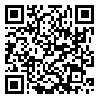BibTeX | RIS | EndNote | Medlars | ProCite | Reference Manager | RefWorks
Send citation to:
URL: http://jvessels.muq.ac.ir/article-1-148-en.html
Background and Aim: Stroke is the leading cause of long-term disability. Understanding how people recover from stroke and other brain lesions remain one of the biggest conundrums in neuroscience. As a result, concerted efforts in recent years have focused on investigating the neurophysiological changes that occur in the brain after stroke, and in developing novel strategies to enhance motor recovery. In particular, repetitive transcranial magnetic stimulation (rTMS) is a non-invasive tool that has been used to investigate the brain plasticity changes resulting from stroke and as a therapeutic modality to safely improve motor function.
Materials and Methods: We report 5 patients with hemiplegia associated with chronic cerebral infarction, benefit from rTMS, to perform activities of daily living. We also consider recent studies using repetitive TMS (rTMS) in stroke patients to enhance extremity function.
Results: This five patients have shown improvement in quality of life after 10 cessions of rTMS. We discuss the contributions of rTMS to understand how different motor areas, such as the ipsilesional hemisphere, secondary motor areas, and contralesional hemisphere are involved in motor recovery.
Conclusion: Although further studies are needed, these investigations provide an important starting point to understand the stimulation parameters and patient characteristics that may influence the optimal response to non-invasive brain stimulation.
Received: 2021/09/8 | Accepted: 2021/02/28 | Published: 2021/02/28
| Rights and permissions | |
 |
This work is licensed under a Creative Commons Attribution-NonCommercial 4.0 International License. |






